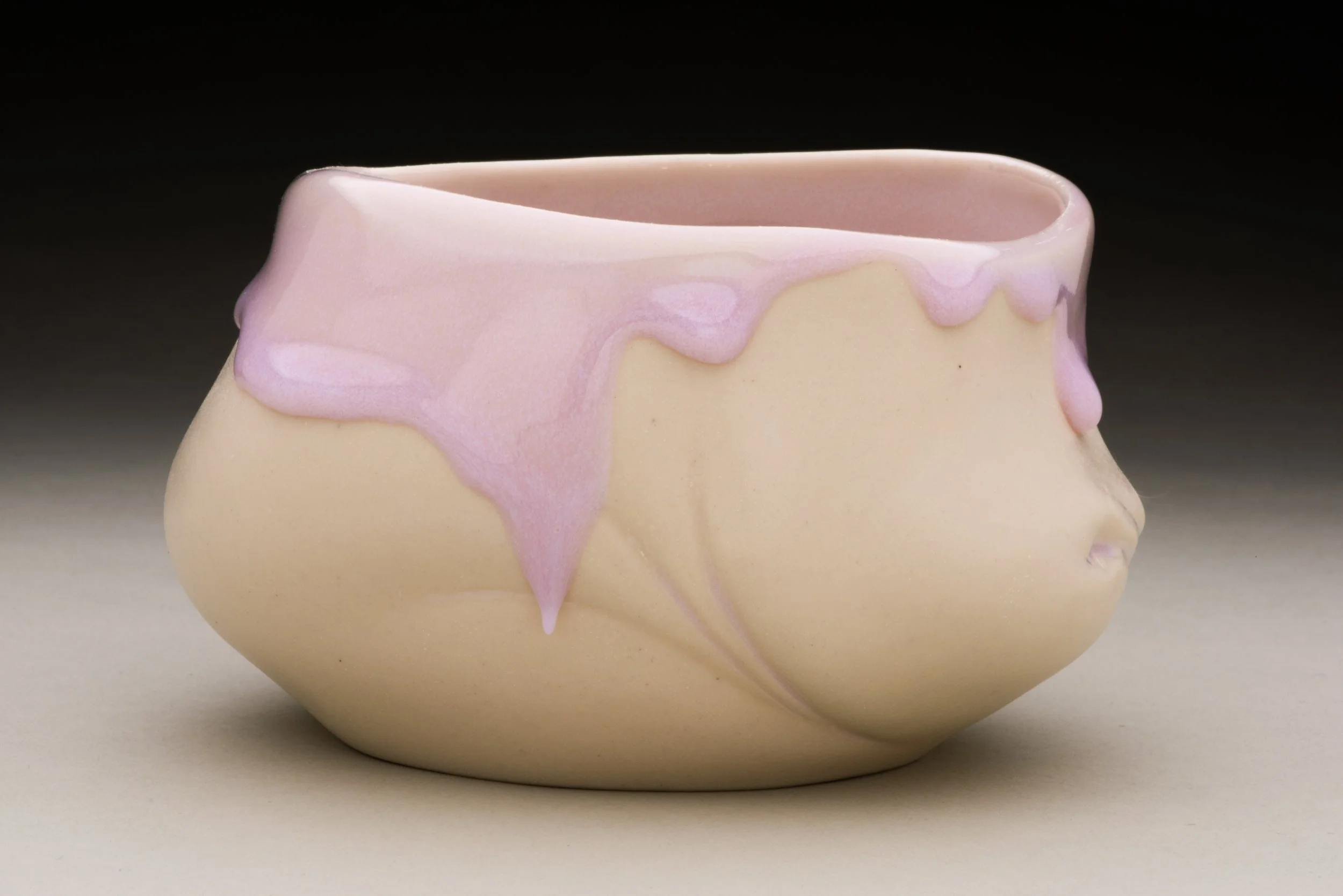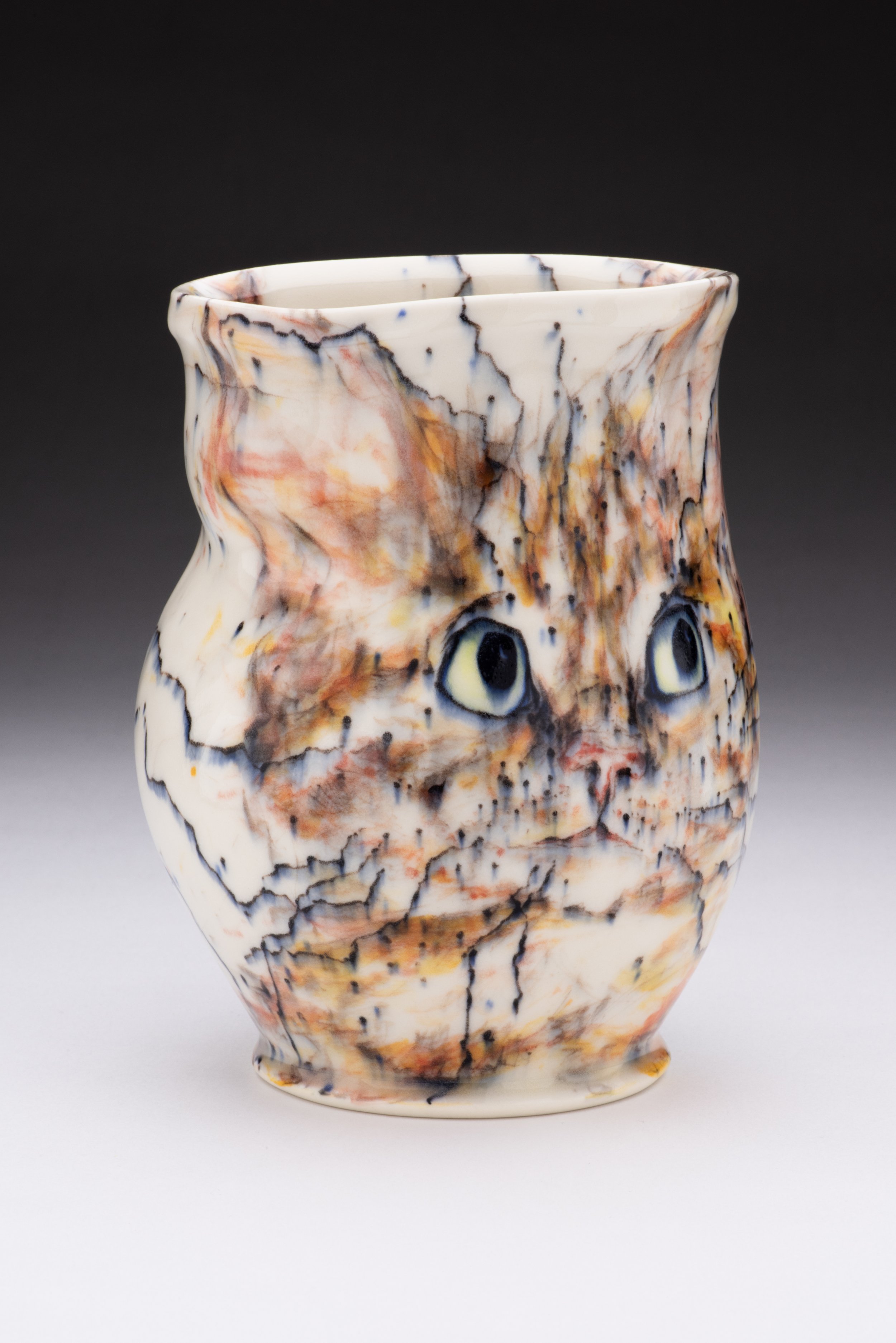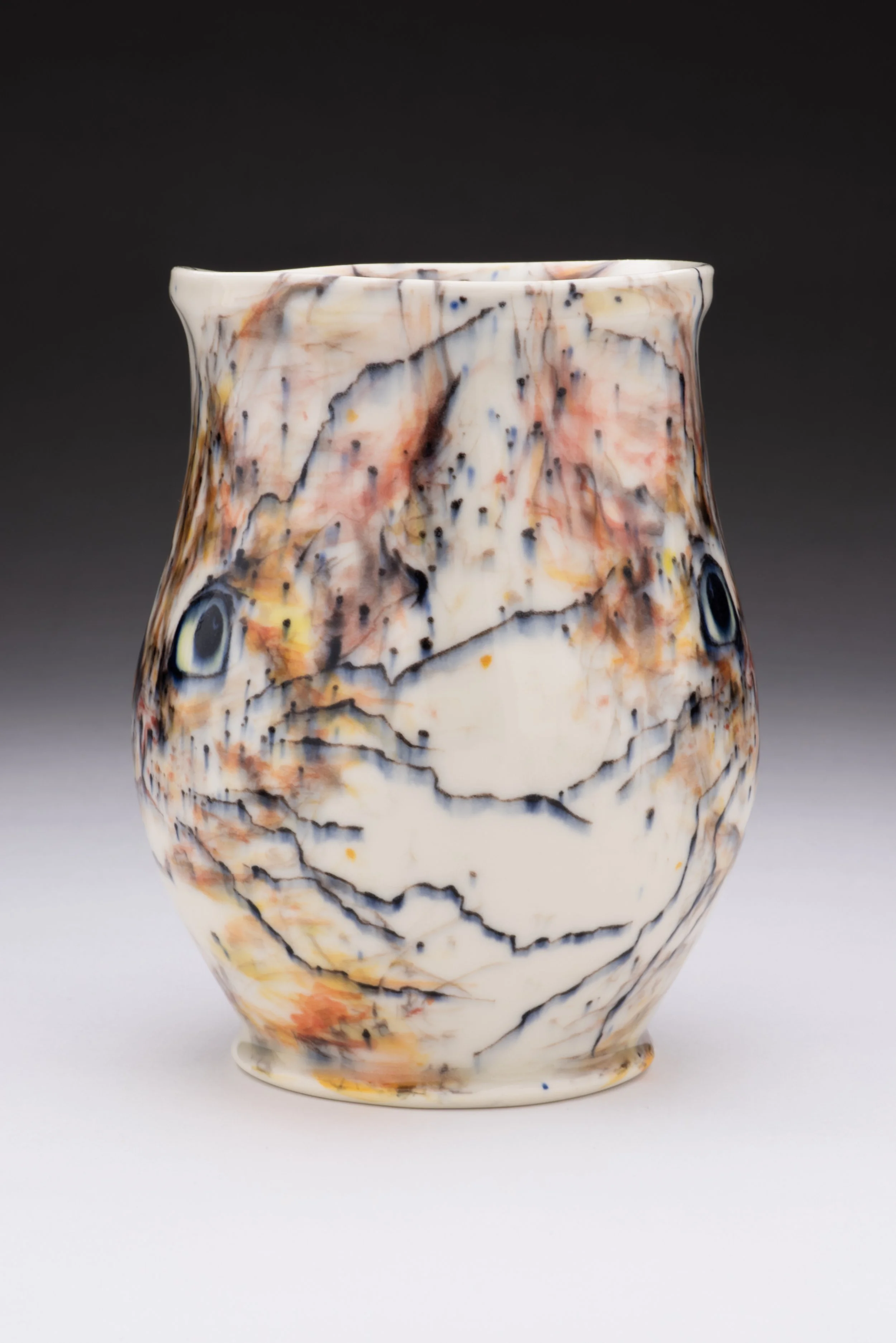In the early 1900s, East Texas potters made pairs of stoneware dogs to be sold as doorstops to local farmers. The pair that my Grannie had on her farm in Como Texas was roughly cast from press molds and glazed a creamy white with cobalt blue decoration. Dogs like my Grannie’s were only made in Hopkins County, but the paired dog form has historical connections to England, China, and Japan. Globally they can represent prosperity, power, protection, and social class. In Texas, they represented hope and a little bit of social civility in a time of poverty.
My Grannie cherished her East Texas doorstop dog. It was one of a pair that had been given to her mother as a welcome gift when she and her daughters were brought to live on the Blalock farm in Como, Texas. The pair of dog doorstops were purchased by the side of the road, on the way into town, traveling by horse and buggy. My Grannie was three years old in 1914, when her family moved from their cabin to Mr. Blalock’s farm. Mr. Blalock’s wife had died, and as was customary, he needed a new wife to care for the kids and for the farm. Farming was a tough social contract in those days for women. Women were workers. Life was dirty. This pair of doorstops brought hope.
Families from North East Texas know these blue and white ceramic dogs as a local antique, different from the paired dog figurines that were being made in the early 20th century all over the American mid-west. They would have been made near the end of the time period that the Victorian Staffordshire Spaniels were made in England. The earliest Staffordshire dog figurines from the mid 1700’s were influenced from Chinese porcelain exports that resembled the Chinese guardian lions or the Japanese lion dogs that guarded temples, palaces, or tombs. I think it’s incredible that the paired ceramic dog has shared symbolism across so many cultures and through so many centuries. To me, it is an example of how many cultures and places are connected.
I wanted to use the paired dog figurines from East Texas to make sculptures that described Texas culture. For my own dog forms, I fabricated press molds so that my casting technique would connect to those Texas potters of the early 1900’s. The original East Texas Dog figurines didn’t have bases, so I decided to make a base that could suggest a social context. The bases of my sculptures are inspired by the rectangle shapes of the cotton bales from industrial farms in West Texas and in East Texas. Instead of cotton, the bases are packed with fingers and hybrid forms that suggest both human flesh and the landscape. The fingers represent labor, and the violence of the social inequality that built the farming culture of Texas. The bright yellows, reds, and blues, relate to the colorful tarps that are on top of the cotton bales when they are in the fields, waiting to go to the gin. I used gold luster as decoration so that there would be a relationship to the Staffordshire style of figurines. I like that together, the dog figurines and the symbolic representation of the cotton bale can create an allegory that references the history of Texas farming culture. I like even more that the dog figurines suggest a relationship to other people and places whose cultures use a similar pair of figurines for different purposes.
I use a technique called nerikomi to create the colored patterns on my sculptures. The word nerikomi is a contemporary Japanese term used to describe the technique of layering multiple colored clays in order to create a repeated pattern. In America, we often refer to this as a Japanese technique, but similar colored clay techniques have been historically used in China, Egypt, Rome, and in more recent history throughout Europe. It is a technique that shares histories that connect pottery traditions across different places. I like the idea that by simply using the nerikomi technique, my Texas Doorstop sculptures reference ceramic traditions from places outside of Texas.





























































































































































































































































